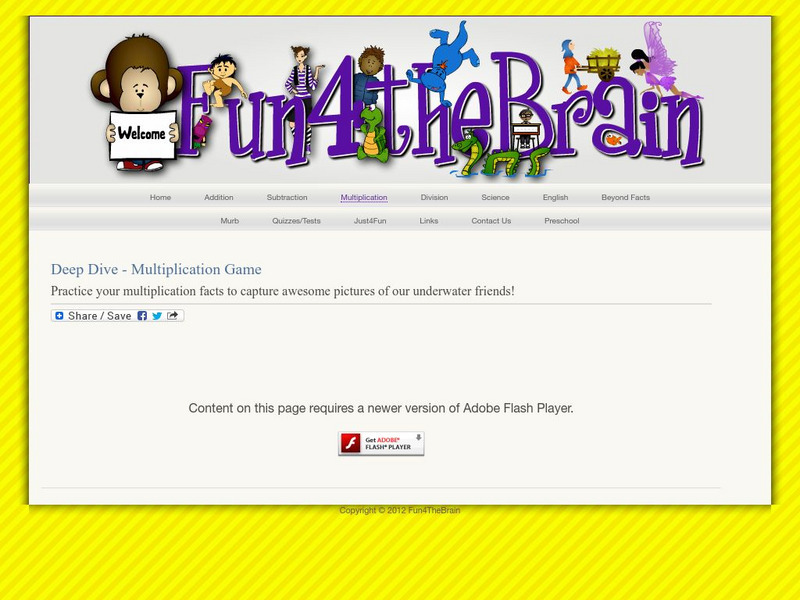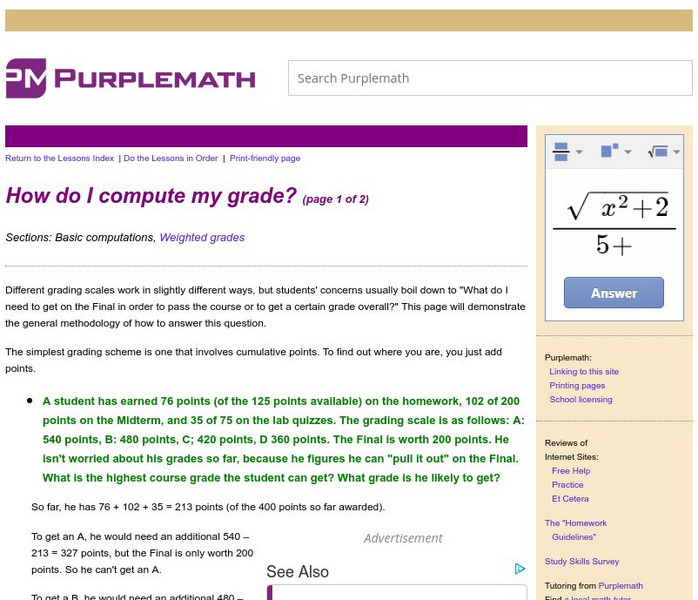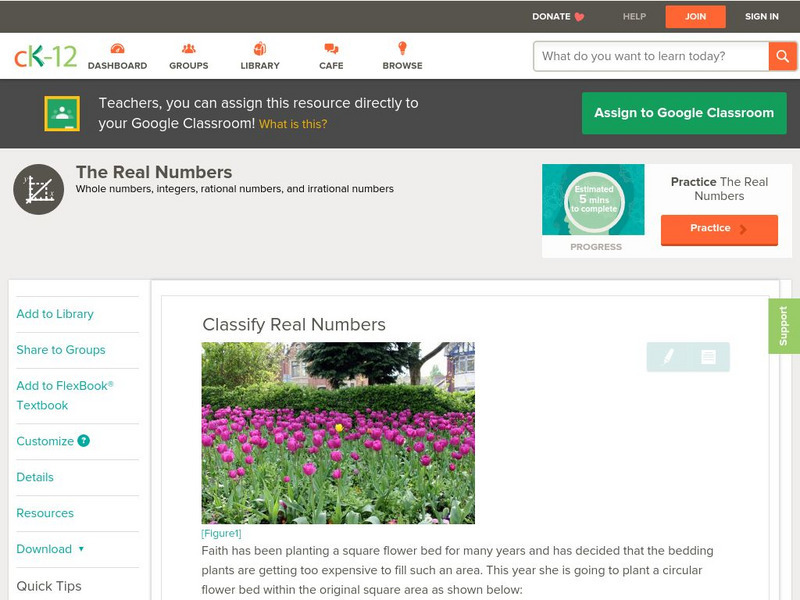Annenberg Foundation
Annenberg Learner: Converting Metric Volume
Practice converting volume from one metric unit to another. Use your calculator if you need to.
Mr. Martini's Classroom
Mr. Martini's Classroom: Identifying Patterns
Determine which shape completes the pattern in this interactive exercise.
Alabama Learning Exchange
Alex: Lining Up the Decimals
This instructional activity provides a chance for the students to order decimals from least to greatest and greatest to least. The numbers are based on a student's ability. This lesson plan was created as a result of the Girls Engaged in...
University of Texas at Austin
Mathematics Teks Toolkit: Math Bargains
Students use real coins to explore and solve problems involving the purchase of items.
University of Texas at Austin
Mathematics Teks Toolkit: Hooked on Problem Solving
Students will take a closer look at numbers to determine patterns within them.
K-5 Math Teaching Resources
K 5 Math Teaching Resources: Patterns in the Addition Table [Pdf]
Students will follow the given steps to explore the patterns in the addition table.
Arcademics
Arcademics: Dolphin Feed
Feed the dolphin selecting the coins that make the given amount of change.
Other
Mathematics Computation
This site gives you math worksheets to save the teacher time and keep the students learning.
Other
Visnos: Fraction Wall
Interactive fraction bars allow practice with mixed and equivalent fractions, decimals, and percents. Use Safari and/or Chrome browser.
Other
Visnos: Spinners
Interactive spinners can be used by teachers and students to find the rule, use order of operations to solve, and substitute values for variables. Best results when Safari or Chrome are used.
Other
Visnos: Polygons
Create regular and irregular polygons and determine the angles and side lengths with this interactive exercise. Use Safari or Chrome browser.
Fun 4 The Brain
Fun4 the Brain: Multiplication Games Deep Dive
Practice multiplication facts with this interactive underwater game.
Fun 4 The Brain
Fun4 the Brain: Division Games Deep Dive
Practice division facts with this interactive underwater game.
University of Texas at Austin
Mathematics Teks Toolkit: Make a Hundred
Play a game with dice to determine if it is possible to make a hundred.
University of Cambridge
University of Cambridge: Maths and Sports: Olympic Logic
Four sporty brainteasers in the context of fencing, hockey, football and international medal tables. This activity challenges students to be resourceful, to think logically and to work systematically, and is designed to be accessible to...
University of Cambridge
University of Cambridge: Maths and Sports: Match the Matches
Decide which charts and graphs represent the number of goals two football teams scored in fifteen matches. This data handling activity is designed to get children talking meaningfully about mathematics, presenting and justifying...
Purple Math
Purplemath: How Do I Compute My Grade?
Demonstrates how to figure out what you need on the Final to pass your course, given a typical grading scheme.
CK-12 Foundation
Ck 12: Algebra: Trends in Data
[Free Registration/Login may be required to access all resource tools.] Learn how to solve problems using tables and patterns.
CK-12 Foundation
Ck 12: Algebra: Sets and Symbols
[Free Registration/Login may be required to access all resource tools.] This lesson covers how to identify the subsets of real numbers and placing a real number into one of these subsets.
CK-12 Foundation
Ck 12: Algebra: Horizontal and Vertical Line Graphs
[Free Registration/Login may be required to access all resource tools.] Write and graph lines of the form y = a constant value and x = a constant value.
TED Talks
Ted: Ted Ed: Folding Way New Origami
Explore origami and the use of mathematical patterns to create patterns and folds. Watch a video, answer questions and learn more.
Alabama Learning Exchange
Alex: Those Number Aren't Just Moody.
Rational numbers can sometimes cause problems when they're converted to repeating decimals. That, we can handle. But, what about those irrational numbers that can only be "sort of, like approximated"? How can we expect middle schoolers...






















